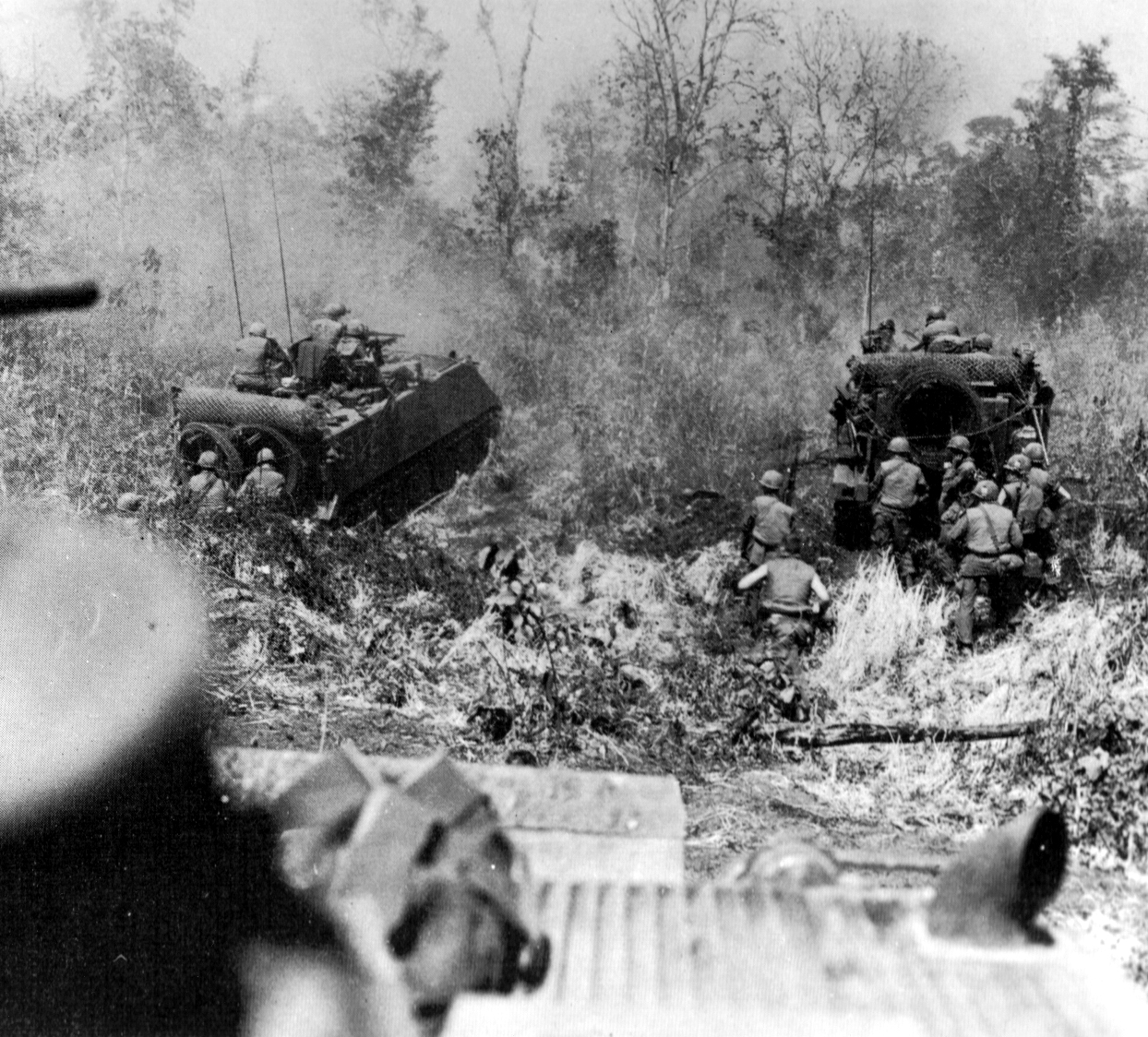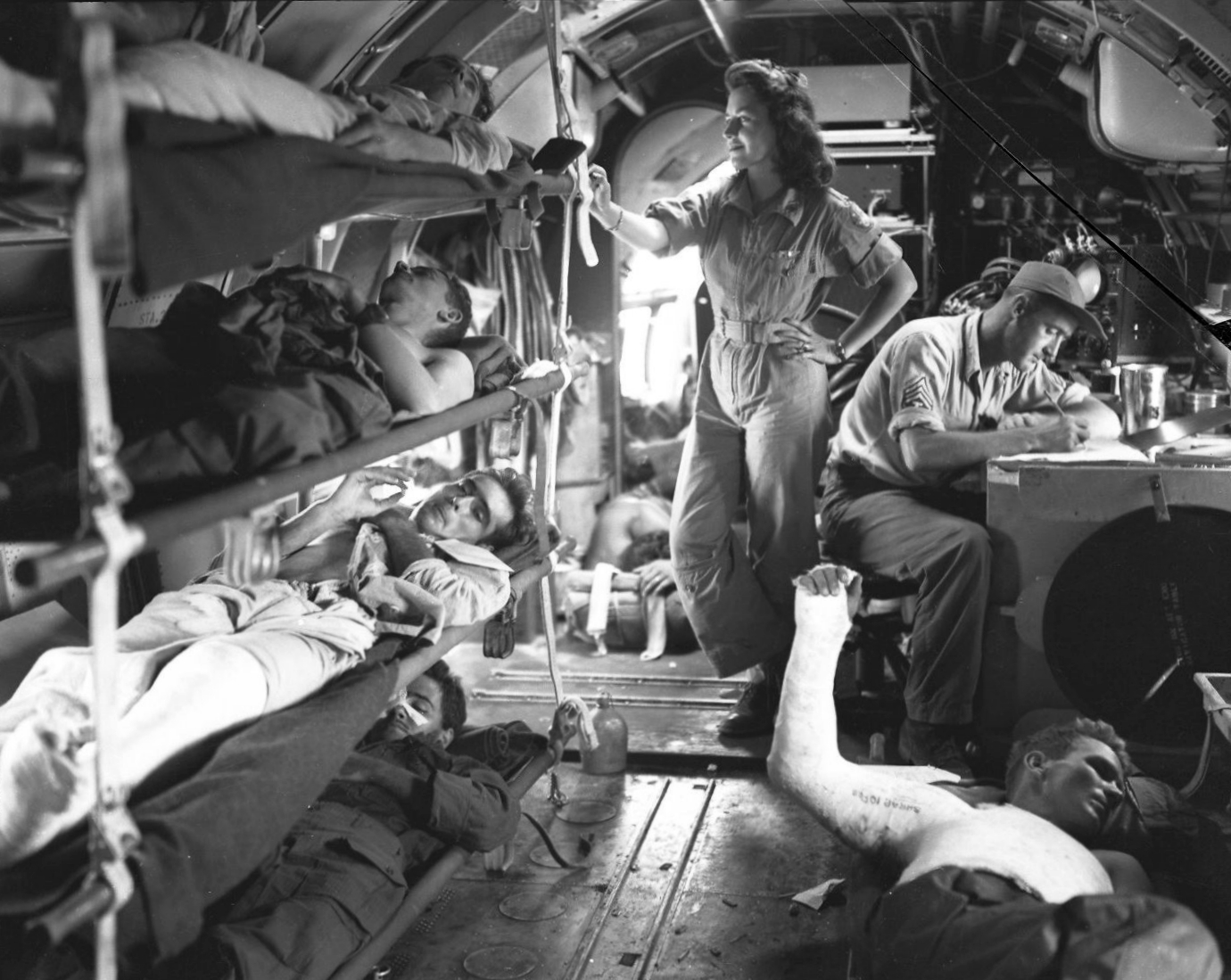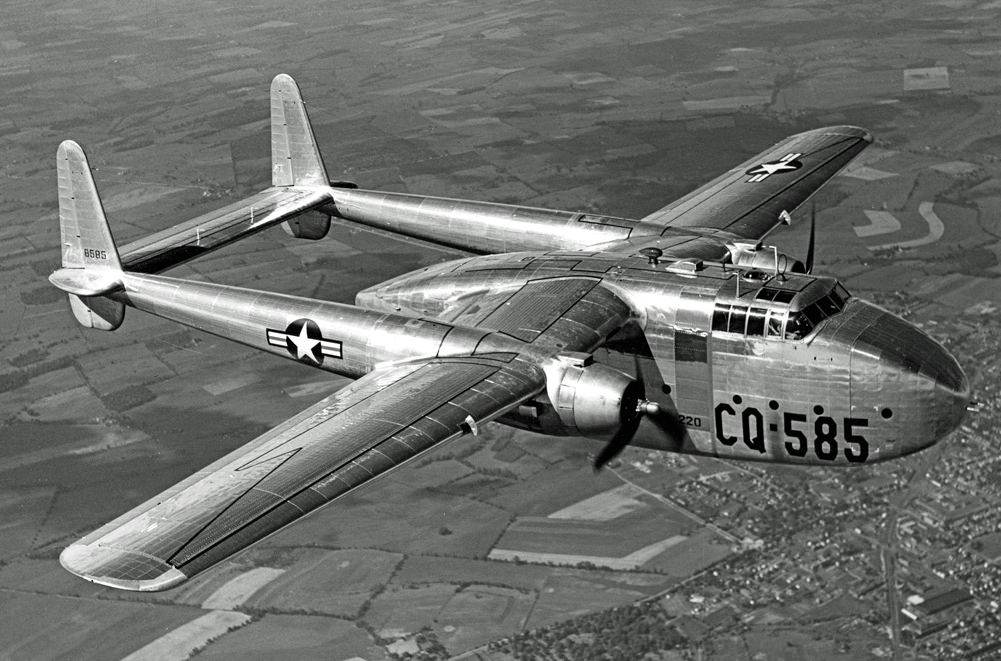|
Operation Tomahawk
Operation Tomahawk was an airborne military operation by the 187th Regimental Combat Team (187th RCT) on 23 March 1951 at Munsan-ni as part of Operation Courageous in the Korean War. Operation Courageous was designed to trap large numbers of Chinese People's Volunteer Army (PVA) and Korean People's Army (KPA) forces between the Han and Imjin Rivers north of Seoul, opposite the Republic of Korea Army (ROK) I Corps. The intent of Operation Courageous was for US I Corps, which was composed of the US 25th and 3rd Infantry Divisions and the ROK 1st Division, to advance quickly on the PVA/KPA positions and reach the Imjin River with all possible speed. Operation Tomahawk was the other half of the plan. This operation was designed to drop the 187th RCT about north of the then current front line. They did so, parachuting from over a 120 C-119 Flying Boxcar and C-46 transport aircraft. When they landed they linked up with ''Task Force Growdon'', which was made up of armored elem ... [...More Info...] [...Related Items...] OR: [Wikipedia] [Google] [Baidu] |
Korean War
The Korean War (25 June 1950 – 27 July 1953) was an armed conflict on the Korean Peninsula fought between North Korea (Democratic People's Republic of Korea; DPRK) and South Korea (Republic of Korea; ROK) and their allies. North Korea was supported by China and the Soviet Union, while South Korea was supported by the United Nations Command (UNC) led by the United States. The conflict was one of the first major proxy wars of the Cold War. Fighting ended in 1953 with an armistice but no peace treaty, leading to the ongoing Korean conflict. After the end of World War II in 1945, Korea, which had been a Korea under Japanese rule, Japanese colony for 35 years, was Division of Korea, divided by the Soviet Union and the United States into two occupation zones at the 38th parallel north, 38th parallel, with plans for a future independent state. Due to political disagreements and influence from their backers, the zones formed their governments in 1948. North Korea was led by Kim Il S ... [...More Info...] [...Related Items...] OR: [Wikipedia] [Google] [Baidu] |
25th Infantry Division (United States)
The 25th Infantry Division (nicknamed "Tropic Lightning") is a United States Army division based at Schofield Barracks in Hawaii. The division, which was activated on 1 October 1941 in Hawaii, conducts military operations primarily in the Asia-Pacific region. Its present deployment is composed of light infantry and aviation units. Tropic Lightning soldiers regularly train with other U.S. military branches to practice and maintain joint operations capabilities. The climate and terrain of the Pacific region demands Tropic Lightning soldiers be able to operate in physically demanding and harsh environments. In 2014, the division opened the Jungle_warfare#United_States, Jungle Operations Training Center—the first such school in the Army since the closing of the old Jungle Warfare School at Fort Sherman, Panama Canal Zone. Joint operations and training with partner states herald a new chapter in the history of Tropic Lightning—America's Pacific Division. The division was original ... [...More Info...] [...Related Items...] OR: [Wikipedia] [Google] [Baidu] |
Battles And Operations Of The Korean War In 1951
A battle is an occurrence of combat in warfare between opposing military units of any number or size. A war usually consists of multiple battles. In general, a battle is a military engagement that is well defined in duration, area, and force commitment. An engagement with only limited commitment between the forces and without decisive results is sometimes called a skirmish. The word "battle" can also be used infrequently to refer to an entire operational campaign, although this usage greatly diverges from its conventional or customary meaning. Generally, the word "battle" is used for such campaigns if referring to a protracted combat encounter in which either one or both of the combatants had the same methods, resources, and strategic objectives throughout the encounter. Some prominent examples of this would be the Battle of the Atlantic, Battle of Britain, and the Battle of France, all in World War II. Wars and military campaigns are guided by military strategy, whereas b ... [...More Info...] [...Related Items...] OR: [Wikipedia] [Google] [Baidu] |
Operation Junction City
Operation Junction City was an 82-day military operation conducted by United States (US) and South Vietnam forces against Viet Cong (VC) forces begun on 22 February 1967 during the Vietnam War. It was the first US combat airborne operation since the Korean War and one of the largest Airmobile operations of the war. Background The stated aim of the almost three-month operation involving the equivalent of nearly three divisions of US troops was to locate the elusive 'headquarters' of the VC in South Vietnam, the Central Office of South Vietnam (COSVN). By some accounts of US analysts at the time, such a headquarters was believed to be almost a "mini-Pentagon", complete with typists, file cabinets, and staff workers with a large guard force. After the end of the war, the actual headquarters was revealed by VC archives to be a small and mobile group of people, often sheltering in ad hoc facilities and at one point escaping an errant bombing by some hundreds of meters. Junction Ci ... [...More Info...] [...Related Items...] OR: [Wikipedia] [Google] [Baidu] |
Parachute Regiment (India)
The Parachute Regiment is an airborne and special forces regiment of the Indian Army. It was raised in 1945 as part of the British Indian Army but was disbanded after World War II and was re-raised in 1952 as part of the Indian Army. Currently it consists of fifteen Special Forces, two Territorial Army and one Rashtriya Rifles battalions. History World War II The first Indian airborne formation was the British Indian Army's 50th Parachute Brigade, which was raised during World War II on 29 October 1941, initially consisting of 151 Parachute Battalion (consisting of British troops), 152 Parachute Battalion (consisting of Indian troops) and 153 Parachute Battalion (consisting of Gurkha troops) alongside other support units. Lt. (later Col.) A.G. Rangaraj, MVC, of the Indian Medical Service and RMO of 152 Parachute Battalion, became the first Indian along with Hav. Maj. Mathura Singh to make a parachute descent. In 1942–43, the formation saw limited action at Nara against P ... [...More Info...] [...Related Items...] OR: [Wikipedia] [Google] [Baidu] |
Indian Army
The Indian Army (IA) (ISO 15919, ISO: ) is the Land warfare, land-based branch and largest component of the Indian Armed Forces. The President of India is the Commander-in-Chief, Supreme Commander of the Indian Army, and its professional head is the Chief of the Army Staff (India), Chief of the Army Staff (COAS). The British Indian Army, Indian Army was established on 1 April 1895 alongside the long established presidency armies of the East India Company, which too were absorbed into it in 1903. Some princely states maintained their own armies which formed the Imperial Service Troops which, along with the Indian Army formed the land component of the Armed Forces of the Crown of India, responsible for the defence of the Indian Empire. The Imperial Service Troops were merged into the Indian Army after Independence of India, independence. The units and regiments of the Indian Army have diverse histories and have participated in several battles and campaigns around the world, earnin ... [...More Info...] [...Related Items...] OR: [Wikipedia] [Google] [Baidu] |
Curtiss C-46 Commando
The Curtiss C-46 Commando is a low-wing, twin-engine aircraft derived from the Curtiss CW-20 pressurized high-altitude airliner design. Early press reports used the name "Condor III" but the Commando name was in use by early 1942 in company publicity. It was used primarily as a cargo aircraft during World War II, with fold-down seating for military transport and some use in delivering paratroops. Mainly deployed by the United States Army Air Forces, it also served the U.S. Navy/ Marine Corps, which called it R5C. The C-46 filled similar roles as its Douglas-built counterpart, the C-47 Skytrain, with some 3,200 C-46s produced to approximately 10,200 C-47s. After World War II, a few surplus C-46 aircraft were briefly used in their original role as passenger airliners but the glut of surplus C-47s dominated the marketplace and the C-46 was soon relegated to cargo duty. The type continued in U.S. Air Force service in a secondary role until 1968. The C-46 continues in operation as ... [...More Info...] [...Related Items...] OR: [Wikipedia] [Google] [Baidu] |
Operation Tomahawk, U
Operation or Operations may refer to: Arts, entertainment and media * ''Operation'' (game), a battery-operated board game that challenges dexterity * Operation (music), a term used in musical set theory * ''Operations'' (magazine), Multi-Man Publishing's house organ for articles and discussion about its wargaming products * ''The Operation'' (film), a 1973 British television film * ''The Operation'' (1990), a crime, drama, TV movie starring Joe Penny, Lisa Hartman, and Jason Beghe * The Operation M.D., formerly The Operation, a Canadian garage rock band * "Operation", a song by Relient K from '' The Creepy EP'', 2001 Television Episodes * "The Operation", ''Sky Dancers'' episode 27 (1996) * "The Operation", ''The Golden Girls'' season 1, episode 18 (1986) * "The Operation", ''You're Only Young Twice'' (1997) series 2, episode 8 (1978) Shows * ''The Operation'' (1992–1998), a reality television series from TLC Business * Manufacturing operations, operation of a faci ... [...More Info...] [...Related Items...] OR: [Wikipedia] [Google] [Baidu] |
Minefield
A land mine, or landmine, is an explosive weapon often concealed under or camouflaged on the ground, and designed to destroy or disable enemy targets as they pass over or near it. Land mines are divided into two types: anti-tank mines, which are designed to disable tanks or other vehicles; and anti-personnel mines, designed to injure or kill people. Land mines are typically pressure activated, exploding automatically when stepped on by a person or driven over by a vehicle, though alternative detonation mechanisms are sometimes used. A land mine may cause damage by direct blast effect, by fragments that are thrown by the blast, or by both. Land mines are typically laid throughout an area, creating a ''minefield'' which is dangerous to cross. The use of land mines is controversial because of their indiscriminate nature and their potential to remain dangerous many years after a conflict has ended, harming civilians and the economy. With pressure from a number of campaign gro ... [...More Info...] [...Related Items...] OR: [Wikipedia] [Google] [Baidu] |
24th Infantry Division (United States)
The 24th Infantry Division was an infantry division (military), division of the United States Army that was inactivated in October 1996. Formed during World War II from the disbanding Hawaiian Division (United States), Hawaiian Division, the division saw action throughout the Pacific theater, first fighting in New Guinea before landing on the Philippine islands of Leyte and Luzon, driving Military history of Japan during World War II, Japanese forces from them. Following the end of the war, the division participated in occupation duties in Japan, and was the first division to respond at the outbreak of the Korean War. For the first 18 months of the war, the division was heavily engaged on the front lines with History of North Korea#The Korean War, North Korean and Korean War#China intervenes (October–December 1950), Chinese forces, suffering over 10,000 casualties. It was withdrawn from the front lines to the reserve force for the remainder of the war after the second battle fo ... [...More Info...] [...Related Items...] OR: [Wikipedia] [Google] [Baidu] |
C-46
The Curtiss C-46 Commando is a low-wing, twin-engine aircraft derived from the Curtiss CW-20 pressurized high-altitude airliner design. Early press reports used the name "Condor III" but the Commando name was in use by early 1942 in company publicity. It was used primarily as a cargo aircraft during World War II, with fold-down seating for military transport and some use in delivering paratroops. Mainly deployed by the United States Army Air Forces, it also served the U.S. Navy/ Marine Corps, which called it R5C. The C-46 filled similar roles as its Douglas-built counterpart, the C-47 Skytrain, with some 3,200 C-46s produced to approximately 10,200 C-47s. After World War II, a few surplus C-46 aircraft were briefly used in their original role as passenger airliners but the glut of surplus C-47s dominated the marketplace and the C-46 was soon relegated to cargo duty. The type continued in U.S. Air Force service in a secondary role until 1968. The C-46 continues in operation a ... [...More Info...] [...Related Items...] OR: [Wikipedia] [Google] [Baidu] |
C-119 Flying Boxcar
The Fairchild C-119 Flying Boxcar (Navy and Marine Corps designation R4Q) is an American military transport aircraft developed from the World War II-era Fairchild C-82 Packet, designed to carry cargo, personnel, litter patients, and mechanized equipment, and to drop cargo and troops by parachute. The first C-119 made its initial flight in November 1947, and by the time production ceased in 1955, more than 1,100 had been built. Development The Air Force C-119 and Navy R4Q was initially a redesign of the earlier C-82 Packet, built between 1945 and 1948. The Packet had provided limited service to the Air Force's Tactical Air Command and Military Air Transport Service before its design was found to have several serious problems. Though it continued in service until replaced, all of these were addressed in the C-119, which had its first test flight already in 1947. To improve pilot visibility, enlarge the cargo area, and streamline aerodynamics, the C-119 cockpit was moved forw ... [...More Info...] [...Related Items...] OR: [Wikipedia] [Google] [Baidu] |







